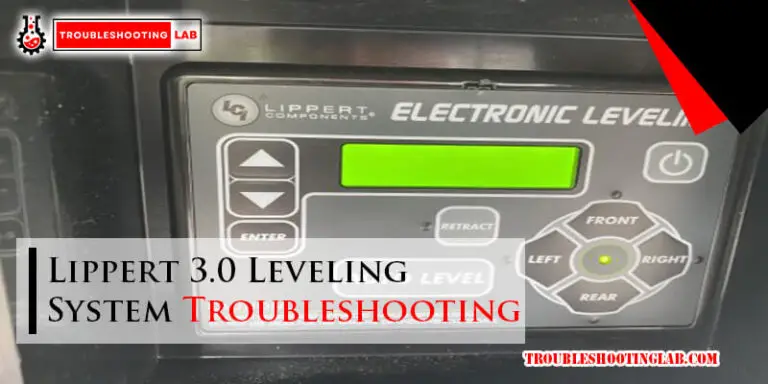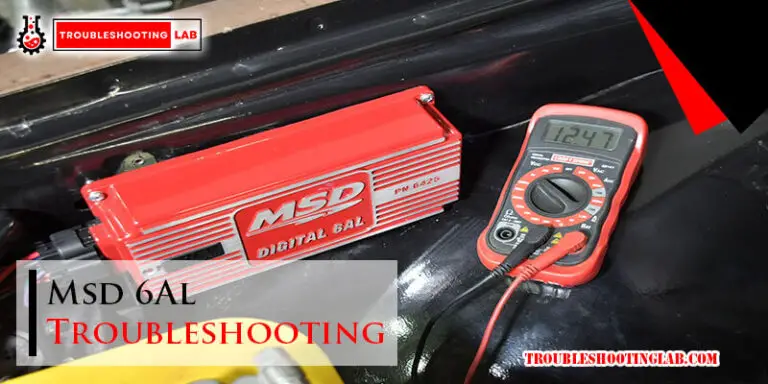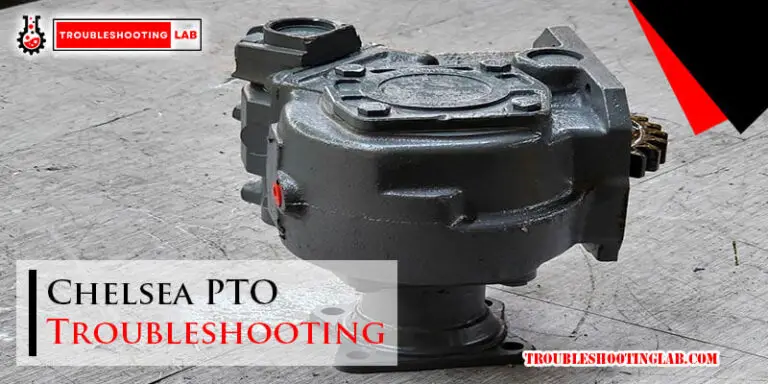Honda Transmission Troubleshooting: Expert Tips and Solutions
Experiencing transmission issues with your Honda can be frustrating. A well-maintained car should run smoothly.
In this blog post, we will dive into common Honda transmission problems and how to troubleshoot them. Transmission issues can lead to bigger problems if not addressed quickly. Understanding these problems is crucial for car owners. From unusual noises to gear shifting troubles, we will cover the signs you should look out for.
By the end of this post, you will know how to identify and address these issues. This will help you save time and money on repairs. Let’s get started on keeping your Honda running smoothly.
Credit: www.ridgelineownersclub.com
Common Transmission Issues
Honda cars are known for their reliability, yet transmission issues can arise. Understanding these problems can help in troubleshooting and repairs. Below are some common transmission issues you might face with your Honda vehicle.
Slipping Gears
Slipping gears is a common issue in Honda transmissions. This occurs when the transmission changes gears unexpectedly. You might notice a sudden loss of power. Your car could shift back and forth without warning.
Here are some signs of slipping gears:
- Engine revs up, but the car does not move faster
- Strange noises during gear shifts
- Delayed acceleration
Regular maintenance can help prevent slipping gears. Check the transmission fluid level and quality. Replace old or dirty transmission fluid.
Delayed Shifting
Delayed shifting is another common problem. Your car takes longer to shift gears. This can happen during acceleration or deceleration.
Common causes of delayed shifting include:
| Cause | Description |
|---|---|
| Low Transmission Fluid | Insufficient fluid can delay gear shifts. |
| Worn Clutch | A worn clutch can cause shifting problems. |
| Electronic Issues | Faulty sensors can disrupt gear shifts. |
Check and replace transmission fluid regularly. Inspect the clutch and sensors if problems persist.
Unusual Noises
Unusual noises can indicate transmission issues. These sounds often occur when shifting gears or while driving.
Common noises include:
- Grinding sounds
- Whining noises
- Clunking sounds
Grinding sounds may indicate worn gears or synchronizers. Whining noises often result from low transmission fluid. Clunking sounds can be due to loose or damaged parts.
Listen for these noises and identify their source. Regular maintenance can help prevent these issues. Always check transmission fluid and replace worn parts promptly.

Credit: www.youtube.com
Diagnosing Transmission Problems
Diagnosing transmission problems in a Honda can seem overwhelming. But breaking it into steps makes it easier. Proper diagnosis helps in timely repairs, saving money and headaches. Let’s explore the key steps to identify transmission issues.
Visual Inspection
A visual inspection is the first step. Start by checking for fluid leaks. Transmission fluid should be red or pink. Brown or black fluid indicates a problem. Check the fluid level with the dipstick. Low fluid levels can cause slipping or slow shifting. Inspect the transmission housing for any signs of damage or wear. Look at the engine compartment for loose cables or connections. This simple check can reveal many issues.
Diagnostic Tools
Using diagnostic tools is crucial for modern vehicles. OBD-II scanners can read error codes from the car’s computer. These codes can point to specific transmission issues. Plug the scanner into the port under the dashboard. Follow the instructions on the scanner to retrieve codes. Note down any codes and refer to the manual or online resources. Some common codes for transmission problems are P0700 and P0740. These tools save time and provide clear directions for further inspection.
Test Drive
A test drive helps identify transmission issues under real conditions. Start the car and listen for any unusual noises. Pay attention to how the car shifts gears. Slipping, hard shifts, or delays indicate problems. Drive at different speeds and note any changes in performance. Check for vibrations or shuddering when accelerating. Observe if the transmission shifts smoothly through all gears. A thorough test drive gives valuable insights into the transmission’s health.
Transmission Fluid Check
Transmission fluid is critical for your Honda’s transmission system. It lubricates and cools the moving parts. Regularly checking the transmission fluid ensures your vehicle runs smoothly. Let’s dive into the key aspects of a transmission fluid check.
Fluid Level
First, ensure the fluid level is correct. Low fluid can cause transmission issues. Use the dipstick to check the level. Park your Honda on a flat surface and let it idle. Insert the dipstick, then pull it out. The fluid should be between the “Full” and “Add” marks.
Fluid Condition
Check the fluid condition. Healthy fluid is reddish and clear. If it looks dark or smells burnt, it may need replacing. Contaminated fluid can harm the transmission. Wipe the dipstick on a white cloth to check its color and clarity.
Refilling Procedure
If the fluid is low, you need to refill it. Use the correct type of fluid for your Honda. Refer to the owner’s manual for guidance. Add fluid through the dipstick tube using a funnel. Pour slowly to avoid overfilling. Check the level again after refilling.
Credit: www.driveaccord.net
Electronic Control Unit (ecu)
The Electronic Control Unit (ECU) is a critical part of your Honda’s transmission system. It controls the transmission’s functions and ensures your car shifts gears smoothly. If the ECU malfunctions, it can cause serious problems with your vehicle’s performance.
Ecu Reset
Resetting the ECU can often resolve minor issues. Disconnect the battery for a few minutes. Reconnect it to reset the ECU. This process clears error codes and resets the system. Always consult your vehicle’s manual before attempting this.
Ecu Reprogramming
Reprogramming the ECU can fix software-related issues. This involves updating the ECU’s software to the latest version. A professional should do this to avoid complications. Dealerships and certified mechanics have the necessary tools.
Ecu Replacement
Sometimes, the ECU needs replacement. This happens if the unit is damaged or faulty. Replacing the ECU requires matching the new unit to your vehicle’s specifications. A professional mechanic should handle this task to ensure proper installation.
Transmission Solenoids
Transmission solenoids play a crucial role in your Honda’s transmission system. These small components control the flow of fluid within the transmission. They help ensure smooth gear shifts and optimal performance. If these solenoids malfunction, you may experience shifting problems, erratic transmission behavior, or even transmission failure.
Function Of Solenoids
Solenoids act as gatekeepers for transmission fluid. They open and close to control fluid flow. This action helps manage gear shifts and pressure. Each solenoid is controlled by the transmission control unit (TCU). The TCU sends electrical signals to the solenoids. This ensures the transmission shifts at the right time.
Testing Solenoids
Testing solenoids involves checking their electrical resistance and operation. First, locate the solenoids in your Honda’s transmission. Use a multimeter to measure resistance. The resistance should match the manufacturer’s specifications. If it doesn’t, the solenoid may be faulty. Also, perform a continuity test. This checks if the solenoid is receiving power. If the solenoid fails either test, it needs replacing.
Replacing Solenoids
Replacing solenoids requires some mechanical knowledge. First, disconnect the battery. Remove the transmission pan to access the solenoids. Carefully detach the faulty solenoid. Install the new solenoid, ensuring a secure connection. Replace the transmission pan and reconnect the battery. Test your vehicle to confirm the repair.
Clutch System Inspection
Inspecting your Honda’s clutch system is essential for smooth driving. It helps detect issues early. This section covers key areas of clutch inspection. Learn about clutch wear signs, adjustments, and replacements.
Clutch Wear Signs
Worn clutches cause several problems. Symptoms include:
- Difficulty shifting gears
- Strange noises when pressing the clutch pedal
- Slipping clutch
- Vibrations during acceleration
- Spongy clutch pedal
Check your clutch for these signs. Early detection prevents more serious issues.
Adjusting Clutch
Adjusting the clutch can improve performance. Follow these steps:
- Locate the clutch cable or hydraulic system.
- Check the clutch pedal free play.
- Adjust the cable or hydraulic system as needed.
- Test the clutch pedal for proper engagement.
Proper adjustment ensures smooth gear changes. It also extends clutch life.
Replacing Clutch
Replacing a worn clutch is sometimes necessary. Here’s a basic guide:
- Lift the car and secure it on jack stands.
- Remove the transmission.
- Inspect the flywheel and pressure plate.
- Install the new clutch kit.
- Reassemble the transmission.
Use the correct tools for this task. Consult a professional if unsure.
Preventative Maintenance Tips
Regular maintenance of your Honda transmission can save you time and money. It helps keep your car running smoothly and prevents costly repairs. Follow these preventative maintenance tips to ensure your transmission stays in top shape.
Regular Fluid Changes
Changing the transmission fluid regularly is crucial. Old fluid can cause wear and tear on the transmission parts. Fresh fluid ensures proper lubrication and cooling. Check your owner’s manual for the recommended interval.
Avoiding Overheating
Overheating is a common cause of transmission failure. Make sure your cooling system is in good condition. Avoid heavy towing or driving in hot weather for long periods. Install an auxiliary cooler if needed to keep temperatures down.
Proper Driving Habits
Adopting good driving habits can extend the life of your transmission. Avoid rapid acceleration and sudden stops. Shift gears smoothly and avoid overloading your vehicle. These habits reduce stress on the transmission and help it last longer.
When To Seek Professional Help
Having trouble with your Honda transmission? It can be stressful and confusing. Sometimes, you can fix minor issues yourself. But there are times when you need professional help. Knowing when to seek expert assistance is crucial. This section will guide you through identifying severe issues, choosing the right repair shop, and understanding cost considerations.
Identifying Severe Issues
Severe transmission problems often show clear signs. One major sign is slipping gears. Your car may change gears unexpectedly. This can be dangerous. Another sign is delayed shifting. If your car hesitates before changing gears, it needs attention. Strange noises like grinding or whining are also red flags. These noises usually mean internal damage. Lastly, if you notice fluid leaks, get professional help. Transmission fluid is vital for smooth operation.
Choosing A Repair Shop
Not all repair shops are equal. Look for shops with certified technicians. ASE certification is a good indicator. Read online reviews. They offer insights into customer experiences. Ask friends and family for recommendations. Personal experiences can guide your choice. Visit the shop before committing. Check for cleanliness and organization. Speak with the staff. They should be knowledgeable and courteous.
Cost Considerations
Transmission repairs can be costly. Get multiple quotes. This helps you find a fair price. Ask for a detailed estimate. It should list parts and labor costs. Understand the warranty terms. A good warranty can save you money in the long run. Consider the shop’s location. Sometimes, shops in less busy areas charge less. Don’t always go for the cheapest option. Quality work may cost more but is worth it.
Frequently Asked Questions
What Are Common Signs Of Honda Transmission Issues?
Shifting delays, strange noises, fluid leaks, and warning lights are common signs of transmission problems.
Why Is My Honda Transmission Slipping?
Transmission slipping often happens due to low fluid, worn gears, or a failing clutch.
How Can I Check My Honda’s Transmission Fluid?
Locate the dipstick, pull it out, wipe clean, reinsert, and check the fluid level and color.
Can I Drive With A Bad Honda Transmission?
Driving with a bad transmission can cause further damage. It’s best to get it fixed soon.
How Much Does It Cost To Fix Honda Transmission?
Repair costs vary. Minor fixes might be $100, while a rebuild or replacement can cost $2,000-$4,000.
Conclusion
Troubleshooting your Honda transmission can seem daunting. Start with simple checks. Look for leaks, low fluid, or unusual noises. Regular maintenance can prevent many issues. Always consult your manual for guidance. If problems persist, seek professional help. Proper care ensures a smooth ride and longer transmission life.
Remember, early detection saves time and money. Stay proactive. Happy driving!






